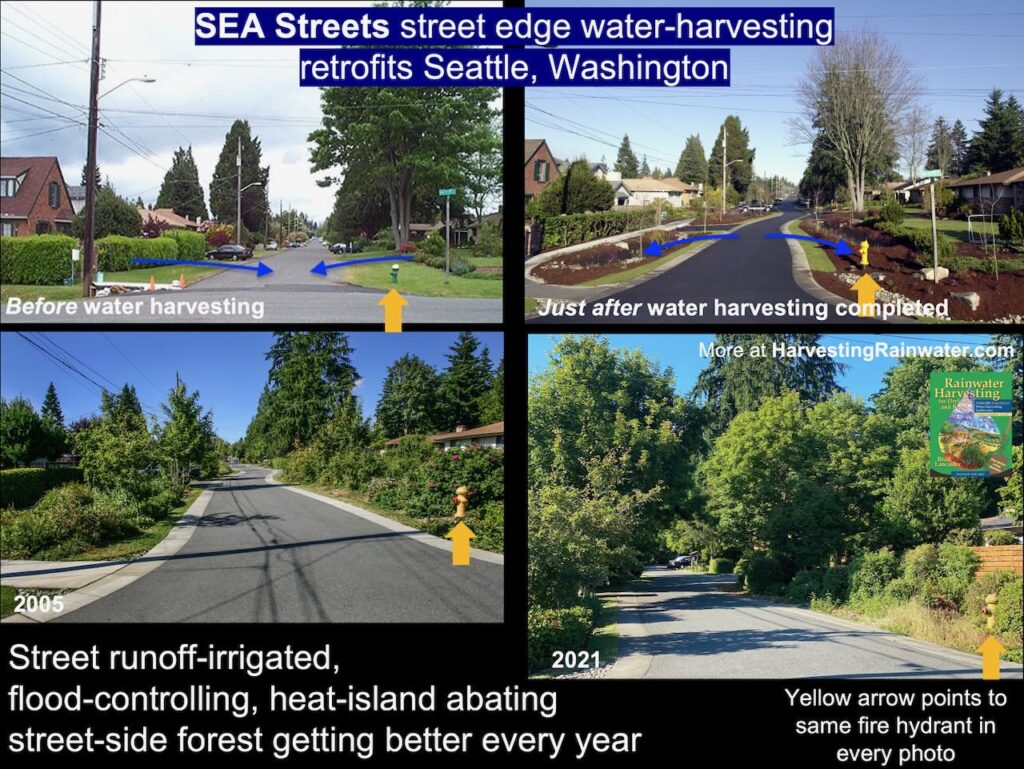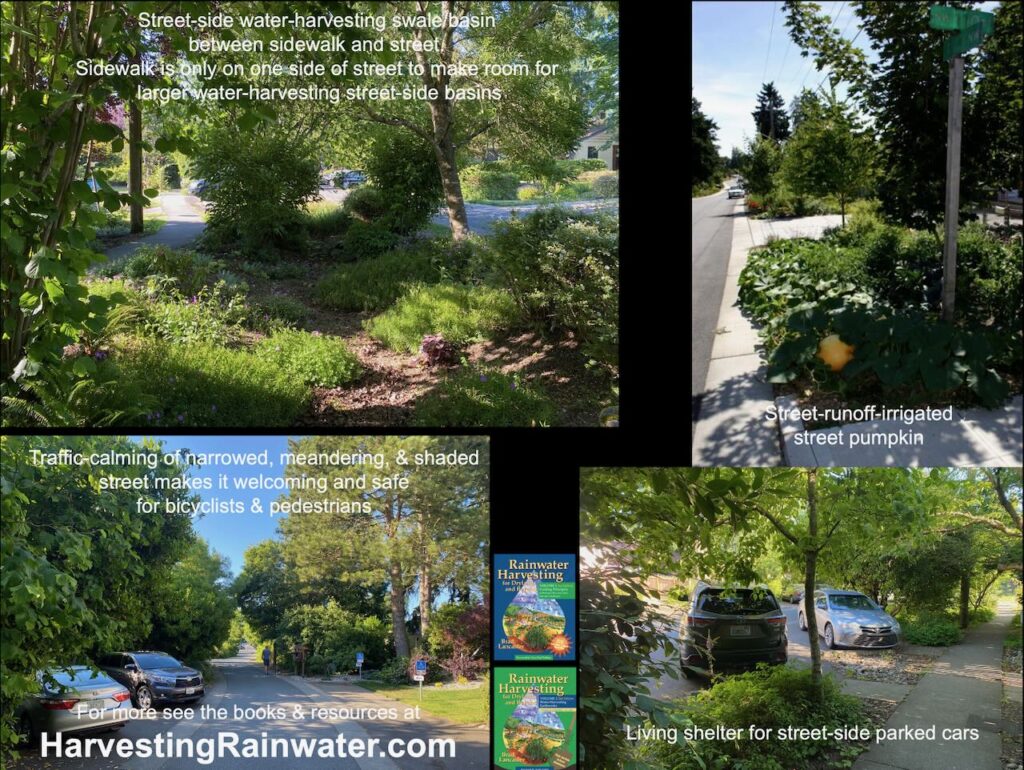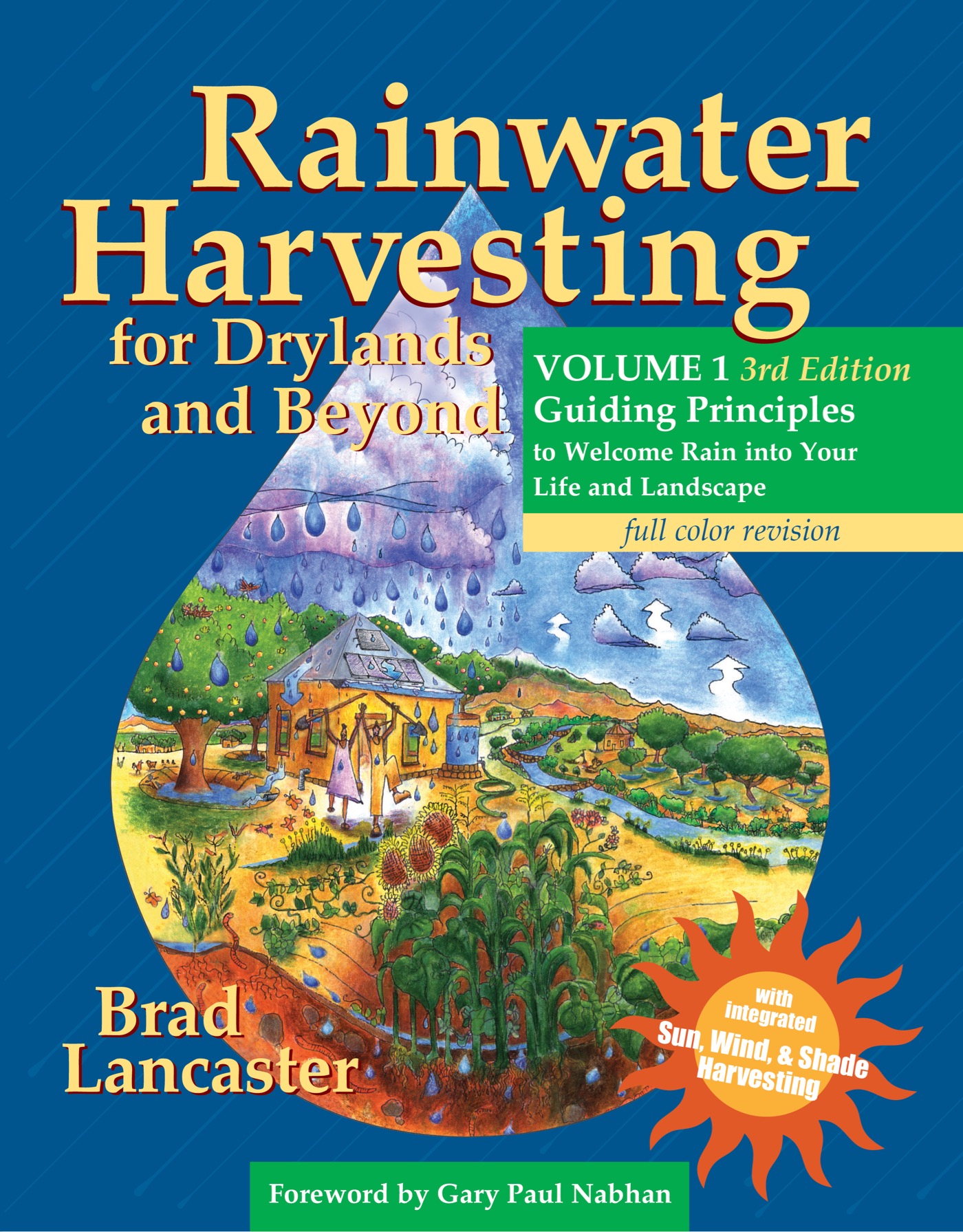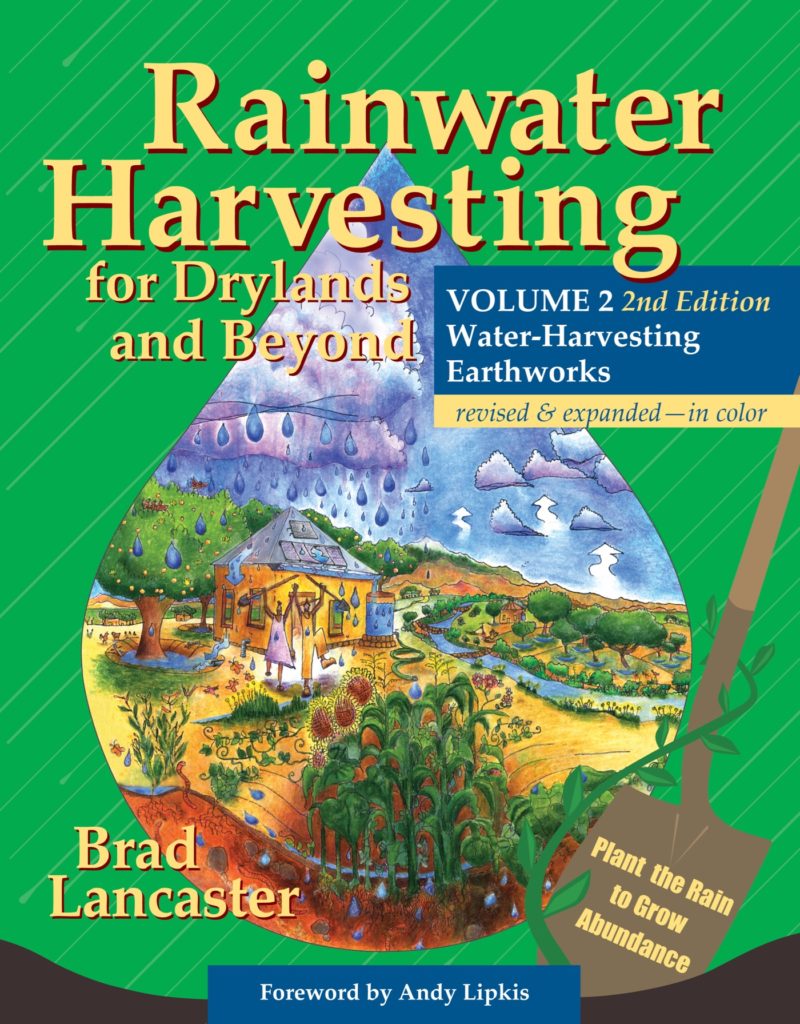Street-side water harvesting that reduces flooding, cools us, minimizes fire risk, and more
by Brad Lancaster, HarvestingRainwater.com
The following is excerpted with permission from Rainwater Harvesting for Drylands and Beyond, Volume 2, 2nd Edition
Are your street-scapes dysfunctional? Dehydrating your community and worse?
If so, they can be retrofitted.
For example, see the transformation below of the SEA Streets (Street Edge Alternatives) project in Seattle, Washington (average annual rainfall of 36 inches or 914 mm) that uses pavement reduction, water-harvesting earthworks, and native salmon-friendly plantings in combination with traditional drainage infrastructure. The result is an area that functions more like the watershed of a healthy forest than a suburban street.

Upper two images courtesy of Seattle Public Utilities.
Lower two images by Brad Lancaster,
Within the project sites, existing linear streets, with open drainage ditches and culverts on either side, were realigned to a curvilinear path narrowed to 14 feet (4.3 m) (18 feet or 5.5 m at intersections), wide enough for two standard cars to pass each other slowly.
A concrete sidewalk mirrors the curvilinear street on one side only, to further minimize impervious paving. All remaining areas within the right-of-way are used to detain and infiltrate stormwater. The old drainage ditches have become meandering diversion swales and rain gardens that lengthen the flow path of runoff, while mulch and native plantings welcome the water into the soil. This reduces downstream flooding, filters contaminants, enhances wildlife habitat, and provides the landscape with most of its irrigation needs.

The impervious surfaces along the street have been reduced 11%, and over 100 trees and 1,100 shrubs have been planted. Rain infiltrates on site and is utilized by the vegetation, eliminating over 98% of the once-problematic stormwater runoff. People enjoy the beautiful landscapes so much there is now big public demand for such work to extend into other streets and neighborhoods. Salmon benefit from the reduction of pollutants and sediments flowing into streams. The rewards of this project are diverse and the cost was comparable to traditional curb, gutter, and sidewalk street improvements.
Fire risk has also been reduced, because this water-harvesting landscape holds onto moisture longer into the dry seasons, while also reducing water loss to evaporation (thanks to the resulting cooler temperatures within the plantings and the soil-carbon-sponge effect of the sponge-like living soils). So while non-water-harvesting landscapes dry out and more easily burn, these water-harvesting landscapes stay moist and fire-resistant longer.
See here for more on the soil-carbon sponge.
For more cool rehydrating projects in Seattle and beyond see the revised, full-color edition of Rainwater Harvesting for Drylands and Beyond, Volume 2, 2nd Edition by Brad Lancaster, available at deep discount, direct from him at HarvestingRainwater.com.
See the new, full-color, revised editions of Brad’s award-winning books
– available a deep discount, direct from Brad:

Volume 1

